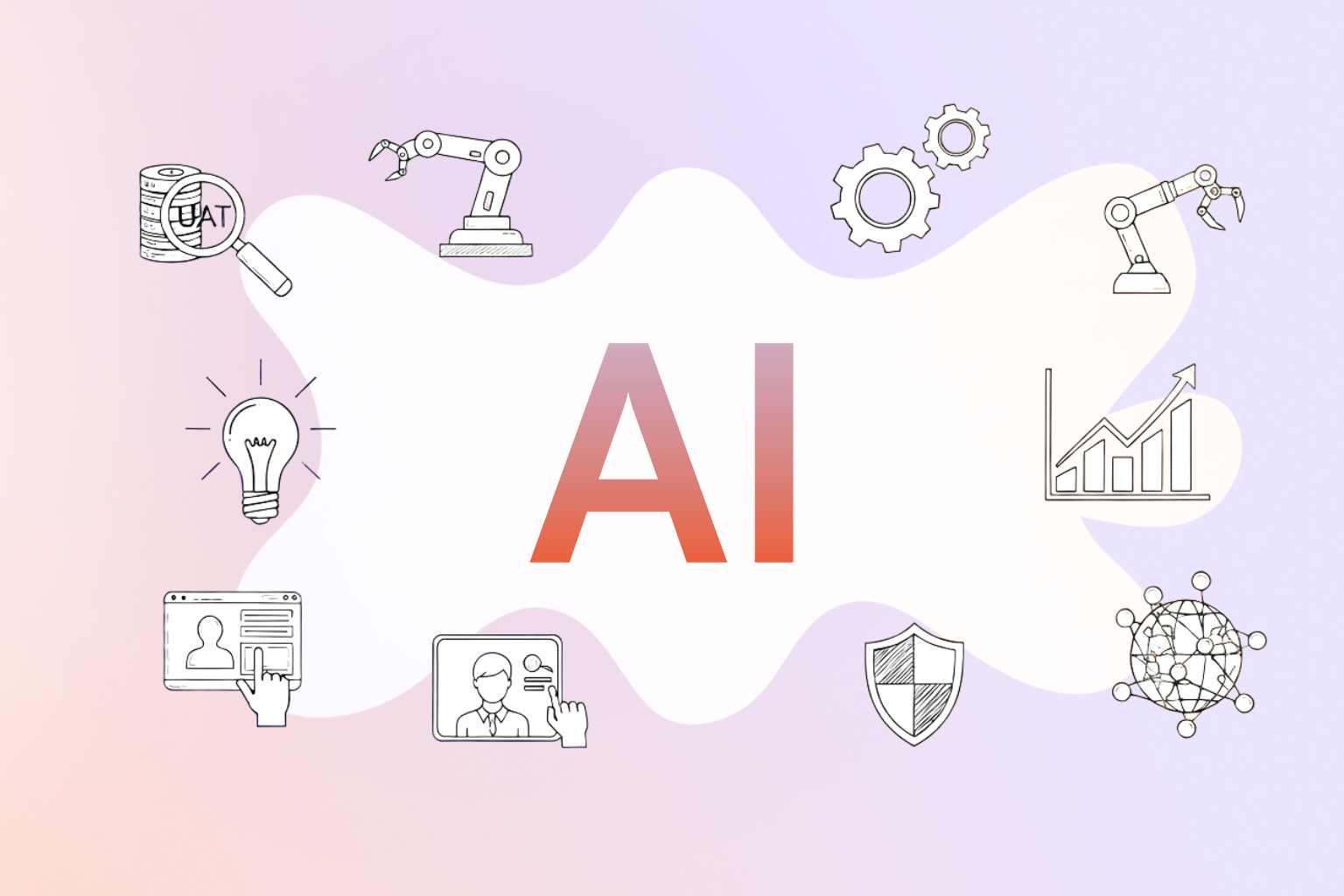The Real Impact of AI on the Modern Organization

From Siloed Operations to Intelligent Ecosystems
1. Meetings Become Memory 🧠 , Not Moments
Tomorrow, every meeting becomes an intelligent artifact:
AI listens, extracts insights, connects them to prior discussions, and updates related projects automatically.
A decision made in R&D instantly updates marketing roadmaps and investor decks.
Impact: No more forgotten action points. Corporate memory becomes searchable, contextual, and alive.
2. 🔍 Search Stops Being a Task — It Becomes a Superpower
Employees spend a quarter of their time searching for information.
With AI-driven enterprise search, the question “Where’s that file?” becomes “Show me every decision we’ve made on this topic.”
The system synthesizes answers from documents, Slack, and SharePoint — not just keywords but meaning.
Impact: Knowledge retrieval turns into strategic insight. Time waste drops by thousands of hours per year.
3. Workflows Execute Themselves ⚙️
In today’s world, teams manually hand over work between functions — sales to ops, ops to finance, etc.
In an AI-native organization, processes are orchestrated, not delegated.
When a deal closes, AI triggers onboarding, creates customer docs, schedules the kickoff meeting, and updates the billing system.
Impact: Execution speed doubles; errors vanish; teams focus on outcomes, not administration.
4. The Organization Starts to Think in Real Time
Instead of quarterly reporting cycles, AI continuously reads signals across systems: performance metrics, customer feedback, supplier data.
Leaders don’t wait for static dashboards; they get live narratives — “Your customer satisfaction dropped in France due to shipping delays. Recommend adjusting inventory.”
Impact: From retrospective reporting to living intelligence. Strategy becomes adaptive.
5. 🧩 Knowledge Stops Walking Out the Door
When employees leave, companies lose years of context.
With AI capturing reasoning, conversations, and decisions, that knowledge becomes part of the company’s collective memory.
New employees can ask, “Why did we switch vendors last year?” and get a summarized explanation with linked sources.
Impact: Institutional knowledge compounds instead of resetting. The company starts to learn like an organism.
6. Brand and Compliance Guardrails Are Built Into the Workflow
In traditional settings, every message, campaign, or document must be checked manually for compliance.
Now, AI enforces the rules as work happens — checking tone, disclaimers, and data handling before publication.
Impact: Risk is reduced without slowing creativity. Trust becomes operational, not procedural.
7. The Employee Experience Becomes Personalized and Proactive
Instead of static intranets and PDFs, every employee interacts with a personal AI workspace — a private assistant that knows their goals, projects, and learning needs.
When priorities shift, it updates them. When confusion arises, it explains context.
Impact: Reduced onboarding time, higher engagement, and an organization that feels smaller and smarter.
8. Collaboration Evolves from “Talk” to “Synchronized Thinking” 🤝
AI maps discussions across teams, spotting duplication or contradiction.
If Marketing and Product are solving the same problem differently, the system connects them automatically.
Impact: Silos dissolve. Redundancy drops. The organization moves from parallel work to collective intelligence.
9. Decision Quality Scales with the Organization
Executives no longer rely on intuition and incomplete slides.
AI synthesizes evidence — internal data, market signals, and past outcomes — into structured decision briefs.
Teams can test “What if” scenarios in real time.
Impact: Bias decreases, transparency increases, and strategy becomes explainable.
10. The IT Function Becomes the Brain’s Infrastructure 💡
Instead of maintaining systems, IT curates the intelligence backbone of the company: access, security, models, and permissions.
Every department plugs into a shared cognitive fabric — governed, traceable, and sovereign.
Impact: AI becomes an embedded capability, not a tool. Governance and innovation finally coexist.
11. The Organization Gains Its Own “Reflexes”
When anomalies appear — in quality control, customer churn, or social sentiment — AI doesn’t just alert; it reacts.
It drafts an escalation note, proposes mitigation, or even executes pre-approved workflows.
Impact: The company shifts from reacting to self-regulating, like a living system maintaining its balance.
12. Strategy Execution Becomes Continuous 🧭
AI links strategy documents, KPIs, and project actions.
When corporate goals change, the system cascades updates across departments automatically.
Everyone’s daily tasks stay aligned with evolving priorities — without endless PowerPoints or town halls.
Impact: Alignment becomes automatic. Leadership bandwidth goes into vision, not coordination.
13. The Company’s Culture Turns Quantifiable
AI sentiment analysis across communication (respecting privacy boundaries) can surface early indicators of burnout, silos, or innovation energy.
Instead of waiting for yearly surveys, leadership sees live cultural patterns.
Impact: Health of the organization becomes visible and manageable — culture by design, not by accident.
14.👩💻 Customers Experience the Company as One Brain
From service tickets to sales emails, AI ensures every customer interaction builds on shared context.
A client never has to repeat themselves; every touchpoint is aware of the full journey.
Impact: Frictionless experience. Higher retention. Brand trust reinforced through intelligence.
15. The Boundary Between “Company” and “Partner Ecosystem” Blurs
AI integrates suppliers, agencies, and resellers into secure, permission-based workflows.
Everyone collaborates within the same intelligent workspace — same truth, different access levels.
Impact: Ecosystems behave as unified, compliant networks. Collaboration speed matches market speed.
✨ The Broader Transformation
These aren’t isolated upgrades — they represent a systemic shift:
- From fragmented tools → to unified intelligence
- From manual coordination → to self-orchestrating workflows
- From knowledge silos → to organizational memory
- From compliance overhead → to built-in trust
When an organization runs on intelligence rather than effort, it becomes faster, safer, and infinitely more adaptive.
That is the true promise of AI: not replacing people, but re-architecting the enterprise itself.
Follow us on LinkedIn